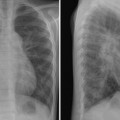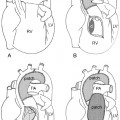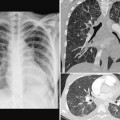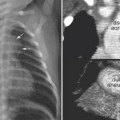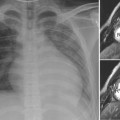22 Hypoplastic Left Heart Syndrome
Definition and Classification
 Not a single lesion but a constellation of cardiac anomalies characterized by underdevelopment of the left heart with normally related and connected great vessels
Not a single lesion but a constellation of cardiac anomalies characterized by underdevelopment of the left heart with normally related and connected great vessels
 Most marked cases show severe stenosis or atresia of the aortic and mitral valves with the left atrium, left ventricle, and ascending aorta markedly underdeveloped (Fig. 22.1).
Most marked cases show severe stenosis or atresia of the aortic and mitral valves with the left atrium, left ventricle, and ascending aorta markedly underdeveloped (Fig. 22.1).
 In some cases only the aortic valve is atretic, and the left ventricle is small and thickened, with the left atrium normal or enlarged.
In some cases only the aortic valve is atretic, and the left ventricle is small and thickened, with the left atrium normal or enlarged.
 Hypoplasia of the aortic arch is variable and there is usually a juxtaductal coarctation.
Hypoplasia of the aortic arch is variable and there is usually a juxtaductal coarctation.
 Ventricular septum is usually intact.
Ventricular septum is usually intact.
 Presence of a ventricular septal defect results in a relatively large left ventricle.
Presence of a ventricular septal defect results in a relatively large left ventricle.
 Survival requires an atrial septal defect and patent ductus arteriosus.
Survival requires an atrial septal defect and patent ductus arteriosus.
Pathophysiology
 Distinguished by different degrees of underdevelopment of the left side of the heart and hypoplasia of the ascending aorta
Distinguished by different degrees of underdevelopment of the left side of the heart and hypoplasia of the ascending aorta
 An interatrial communication through a stretched patent foramen ovale or true atrial septal defect is needed to decompress the left atrium and provide left-to-right shunting of blood.
An interatrial communication through a stretched patent foramen ovale or true atrial septal defect is needed to decompress the left atrium and provide left-to-right shunting of blood.
 Cases with unrestricted atrial septal defect show less severe pulmonary venous hypertension (Fig. 22.1, left panel). Cases with intact atrial septum or restrictive atrial septal defect have severe impairment of blood flow from the left heart, and there is marked pulmonary venous hypertension (Fig. 22.1
Cases with unrestricted atrial septal defect show less severe pulmonary venous hypertension (Fig. 22.1, left panel). Cases with intact atrial septum or restrictive atrial septal defect have severe impairment of blood flow from the left heart, and there is marked pulmonary venous hypertension (Fig. 22.1
Stay updated, free articles. Join our Telegram channel

Full access? Get Clinical Tree


